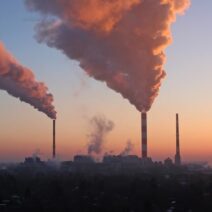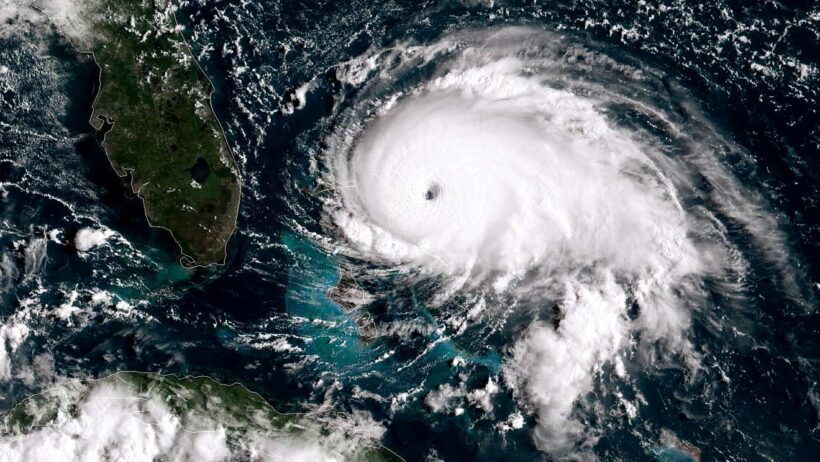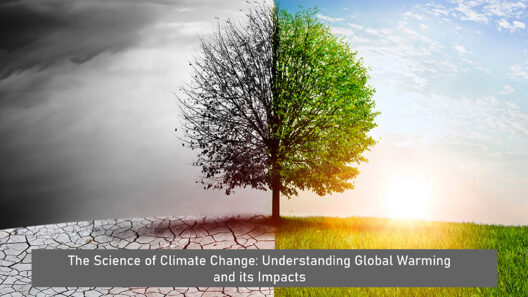Hurricanes are natural phenomena that have captivated human interest for centuries. These ferocious storms, characterized by their swirling winds and torrential rains, have long been seen as acts of nature. However, in recent years, an unsettling observation has emerged: hurricanes are becoming increasingly stronger and more destructive. What could be the underlying reasons for this alarming trend? The answer is multi-faceted, but at its core lies the phenomenon of global warming. This exploration delves into the mechanics of hurricanes, the intricate relationship with climate change, and the broader implications for our planet.
At the outset, it is essential to comprehend how hurricanes are formed. Tropical cyclones, commonly referred to as hurricanes in the Atlantic, arise over warm ocean waters, typically when sea surface temperatures exceed 26.5 degrees Celsius (about 80 degrees Fahrenheit). The intricate dance of warm air rising and cooler air descending creates a low-pressure system, which can intensify into a hurricane under favorable atmospheric conditions. The structure of a hurricane—comprising an eye, eyewall, and rainbands—is a marvel of nature. Yet, this natural architecture is increasingly disrupted by external influences, not least of which is the warming of our planet.
Global warming, primarily driven by the accumulation of greenhouse gases in the atmosphere, has significant repercussions for weather patterns. As the planet’s temperature rises due to human activities such as the burning of fossil fuels, deforestation, and industrial processes, ocean temperatures also increase. Warmer seas serve as fuel for hurricane formation and intensity. Research indicates that for every 1-degree Celsius rise in sea temperature, the potential for hurricane wind speeds to increase by approximately 1 to 2 percent is realized. This correlation between elevated ocean temperatures and intensified storms is not merely theoretical; it has been corroborated by empirical data observed in recent hurricane seasons.
The implications of stronger hurricanes extend beyond the physical aspects of the storms themselves. Powerful hurricanes can result in catastrophic flooding, destruction of infrastructure, and loss of life—consequences that reverberate through communities and economies. Coastal areas, which are inherently more vulnerable to storm surges, face existential threats as hurricanes grow fiercer. The juxtaposition of rising sea levels—also a byproduct of global warming—exacerbates the situation, increasing the likelihood and severity of flooding. It paints a disheartening picture: a world where the frequency and ferocity of hurricanes rise in tandem with increasingly hostile environmental conditions.
Another critical dimension to consider is the changing patterns of storm tracks. Climate change influences atmospheric circulation patterns, which in turn affects where and how hurricanes form and travel. Some regions may experience more frequent direct hits from storms, while others may see a decline in hurricane activity. This unpredictability poses challenges for disaster preparedness and mitigation strategies. Communities must adapt to the new normal, which requires resilient infrastructure, better emergency response systems, and greater emphasis on sustainability.
While it is easy to point fingers and attribute blame solely to global warming, it is also vital to recognize the role of urbanization and land use in escalating hurricane impacts. As populations grow and urban centers expand, more lives and assets are placed in harm’s way. The interplay between developed landscapes and natural systems complicates hurricane dynamics further. Urban areas can exacerbate flooding due to impervious surfaces that prevent proper drainage, leading to more severe outcomes during storms.
Moreover, as storms intensify, the issue of recovery becomes increasingly complex and fraught with socio-economic ramifications. Vulnerable populations—often marginalized—bear the brunt of disasters. Inequities in resources can hinder recovery efforts, leaving communities to grapple with the aftermath of storms with inadequate support. Climate change, as it intensifies hurricane strength and frequency, often magnifies these disparities, necessitating a multifaceted approach to building resilience in a changing world.
The phenomenon of stronger hurricanes as a consequence of global warming is not merely an environmental concern; it embodies a poignant narrative about our planet’s future. As stewards of the Earth, we are compelled to confront the reality of climate change proactively. It calls for concerted global action aimed at reducing greenhouse gas emissions, embracing renewable energy sources, and enhancing our understanding of climate science. Institutions, governments, and individuals must collaborate to create frameworks for sustainable practices that mitigate the adverse effects of rising temperatures.
In the face of hurricanes that grow stronger by the year, we confront a choice: either to disregard the signs and let nature dictate our fate or to take informed action that involves restructuring our relationship with the environment. Education, advocacy, and community engagement stand at the forefront of this battle against climate change and its stormy manifestations. The time is ripe for societal transformation, where environmental stewardship and sustainability are woven into the fabric of daily life and policy-making.
As we anticipate the next hurricane season, it is paramount to remain vigilant and informed about the realities we face. Understanding the intricate links between global warming and hurricane intensity is not just a matter of scientific inquiry; it is an essential component of safeguarding our futures and the planet’s health. The stakes are high, and the need for action could not be more pressing.








